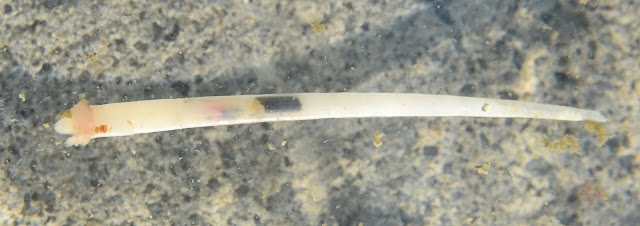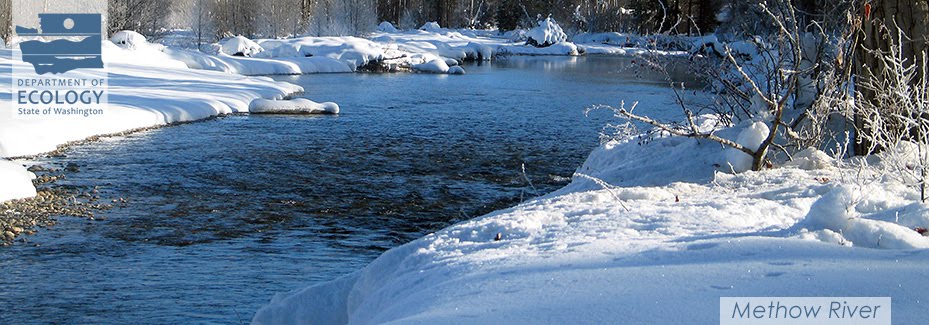Welcome to the jungle! Take a walk on the wild side with this month’s group of critters, which look like something you might find on an elephant’s face.
 |
Rhabdus rectius, a species of tusk shell found in Puget Sound. Photo courtesy Dave Cowles, wallawalla.edu.
|
Come shell or high water
 Tusk shells belong to the Class Scaphopoda, meaning “boat foot,” which refers to lobes near the animal’s foot resembling a boat hull. Scaphopods are strictly marine organisms that can live at an incredible depth of up to 4,570 meters – or more than 13,000 feet deep!
Tusk shells belong to the Class Scaphopoda, meaning “boat foot,” which refers to lobes near the animal’s foot resembling a boat hull. Scaphopods are strictly marine organisms that can live at an incredible depth of up to 4,570 meters – or more than 13,000 feet deep! While there are more than 900 species worldwide, we only encounter two species during our sediment sampling in Puget Sound. Most tusk shells we collect are from our northern sampling locations in Bellingham Bay, San Juan Islands, and the Strait of Georgia.
The elephant in the room
 |
Top: Pulsellum salishorum in its shell. Bottom:
A P. salishorum head up close up with foot and captacula withdrawn. Bright pink color comes from stain used to pick animals out of sediment samples. |
The shell’s inner surface is lined with the mantle, a soft inner body wall all mollusks share. Unlike other mollusks, however, scaphopods lack gills for taking in oxygen. Instead, they have tiny hairs or cilia that move water around the mantle cavity. The beating cilia suck water in through the shell’s smaller opening and push it back out the same way after the oxygen has been used up.
Head to toe
Scaphopods lack gills and a heart and blood vessels for circulation. Instead, their blood is pumped by the movement of the scaphopod’s muscular foot, located at the end of its head. The foot pulls double duty: It is also responsible for locomotion. To move, the animal stretches out its foot to anchor it into the sediment. Then, it pulls the entire body after it when it retracts.
All you can eat
 |
Foraminiferans, favorite food
of scaphopods, are about poppy-seed size. Photo courtesy Burke Museum. |
Sticky fingers
 |
Top: 6cm Rhabdus rectius in its shell. Bottom:
Head end of R. rectius (shell removed) showing
foot and club-shaped captacula.
|
Shell to pay
Occasionally you may find an empty tusk shell washed up on the beach, or see them in shell shops or sold as jewelry. These uses originated long ago, when prehistoric tribes collected scaphopod shells for decorations. Some American Indian tribes used the shells as jewelry and monetary currency. The Sioux and Kiowa tribes used scaphopod shells to decorate their armor.
A woman of the Pacific Northwest Wishram tribe (left) wears a bridal headdress, earrings, and shawl embedded with scaphopod shells (photo courtesy Edward Curtis). A 19th century scaphopod necklace and bracelet from Nez Perce National Historical Park.
By: Dany Burgess and Angela Eagleston, Environmental Assessment Program
Critter of the Month
Our benthic taxonomists, Dany and Angela, are scientists who identify and count the benthic (sediment-dwelling) organisms in our samples as part of our Marine Sediment Monitoring Program. We are tracking the numbers and types of species we see in order to understand the health of Puget Sound and to detect any changes over time.
Dany and Angela share their discoveries by bringing us a Benthic Critter of the Month. These posts will give you a peek into the life of Puget Sound’s least-known inhabitants. We’ll share details on identification, habitat, life history, and the role each critter plays in the sediment community. Can't get enough benthos? See photos from our Eyes Under Puget Sound collection on Flickr.


No comments:
Post a Comment